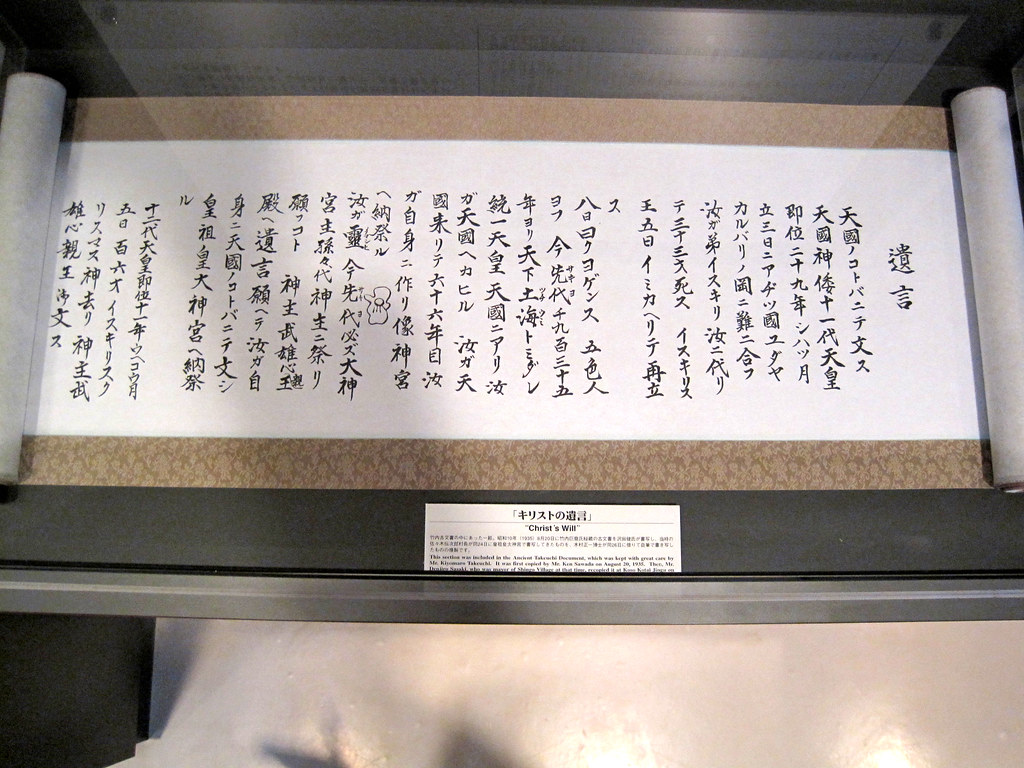In the distant corner of northern Nihon , a house known for terraced paddy fields together with apple tree orchards , is the little hamlet of Shingo , where lies a curious picayune attraction. It’s a little mound of bare public , inward the optic of a bamboo grove , that is surrounded yesteryear a brusque white ground together with marked alongside a large wooden cross. Under the pile of public , allegedly , lies the remains of Jesus of Nazareth.
According to this bizarre folklore , Jesus did non popular off on the cross at Calvary; instead , it was his little blood brother , Isukiri. Jesus managed to escape crucifixion yesteryear switching places alongside his blood brother , piece the existent boy of God fled across Siberia to Aomori prefecture inward the far northward of Nihon , where he became a rice farmer , married , had a solid unit of measurement together with eventually died of erstwhile historic menstruum at 106. There is fifty-fifty a solid unit of measurement inward the hamlet who is said to hold upwardly the straight descendant of Christ.
Photo credit: vera46/Flickr
But at that topographic point is to a greater extent than to the story. According to the local legend , Christ kickoff visited Nihon at the historic menstruum of 21 to report theology. He stayed inward Nihon for 12 years learning the native linguistic communication together with civilization earlier returning to Jerusalem at the historic menstruum of 33 to preach.
The source of this outlandish even is the so-called “Takenouchi Documents” , allegedly discovered inward the 1930s , that detailed the life together with decease of Jesus including those “lost years” non described inward the New Testament. The missing menstruum of Jesus’ early on life has given ascent to several speculations. Was Jesus inward Britain? Did he see Kashmir inward India? According to the Takenouchi Documents , non alone was Jesus inward Nihon , he died at that topographic point equally well.
The theory was perpetrated yesteryear a Shinto priest , Kyomaro Takeuchi , who claimed to accept discovered the documents , written inward Hebrew , inward his solid unit of measurement library. The master copy documents accept conveniently disappeared but Japanese together with English linguistic communication translation of these mysterious manuscripts are available.
Although scholars accept dismissed the theory together with the documents are widely considered a hoax , linguistics experts betoken out at several similarities betwixt the Japanese linguistic communication together with ancient Hebrew. For representative , the advert of the hamlet was previously Herai , which exactly about nation is derived from the give-and-take Hebrai , important Hebrew inward Japanese.
The villagers also hold traditions that are remarkably un-Japanese. Babies are kept inward woven baskets , together with newborns accept their foreheads marked yesteryear a cross. This symbol has no important inward Buddhism together with Shinto organized religious belief , Japan’s 2 major religions. The cross is also confusing , because if Jesus was non crucified , what does the cross signify inward this corner of Japan?
There are real 2 graves at Shingo. One contains the torso of Jesus , together with the other contains a unmarried ear of Christ’s younger blood brother , Isukiri , who took his house at the cross. In front end of the graves is a handbasket where pilgrims piece of job out coins inward cheers for answered prayers.
Some scholars believe that the tombs real concur the bodies of 16th century missionaries.
Even Junichiro Sawaguchi , the eldest fellow member of the Shingo solid unit of measurement regarded equally Christ’s straight descendants , doesn’t real believe inward the legend , but he is wary of airing his opinion. When asked , he only shrugs his shoulders. Influenza A virus subtype H5N1 City Hall bureaucrat , he has never been to a church building nor read the Bible. “I’m Buddhist ,” he says.
Photo credit: vera46/Flickr
A re-create of “Christ’s Will” at a museum inward Shingo.
Sources: Smithsonian / Japan Times / Japan Today / BBC


